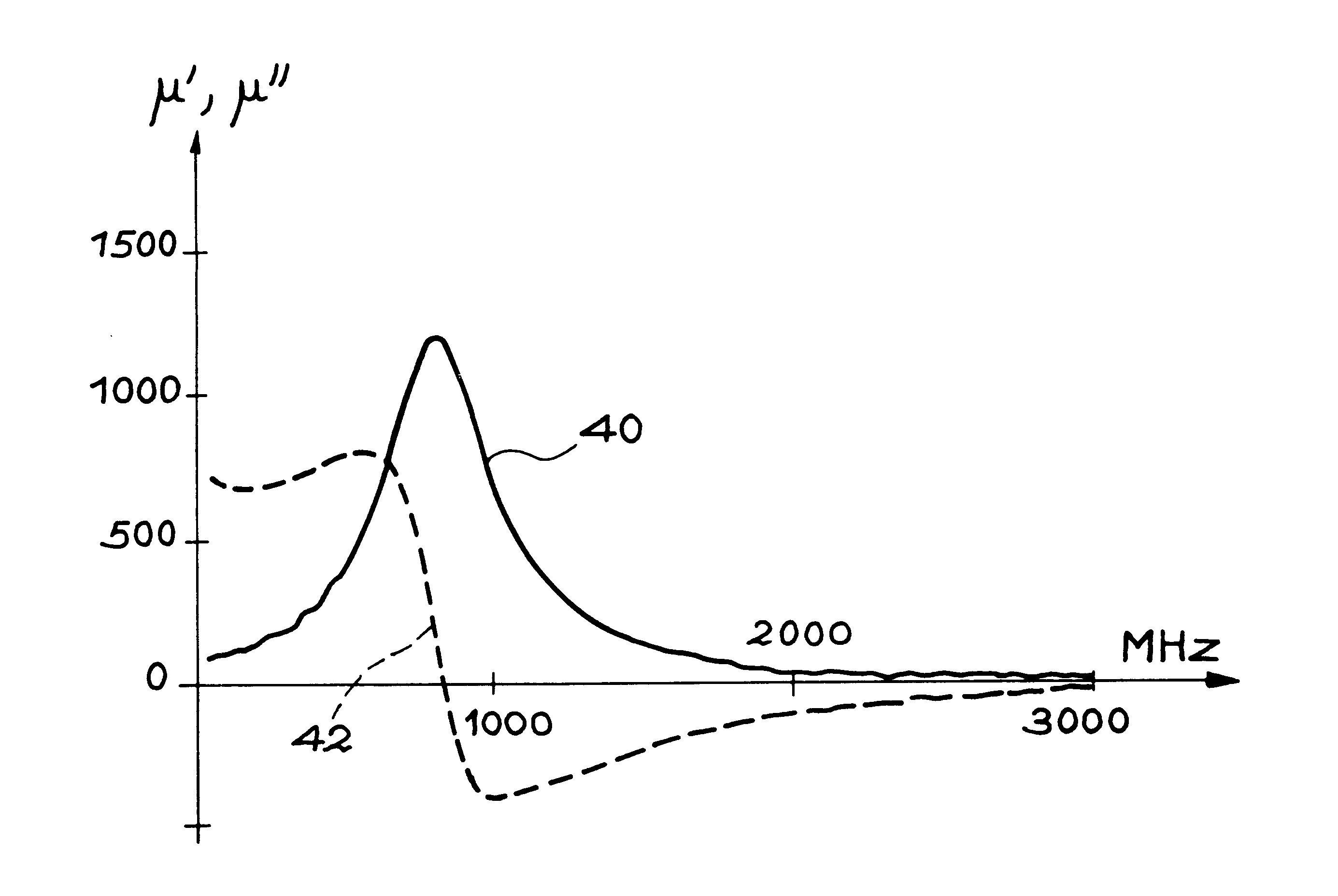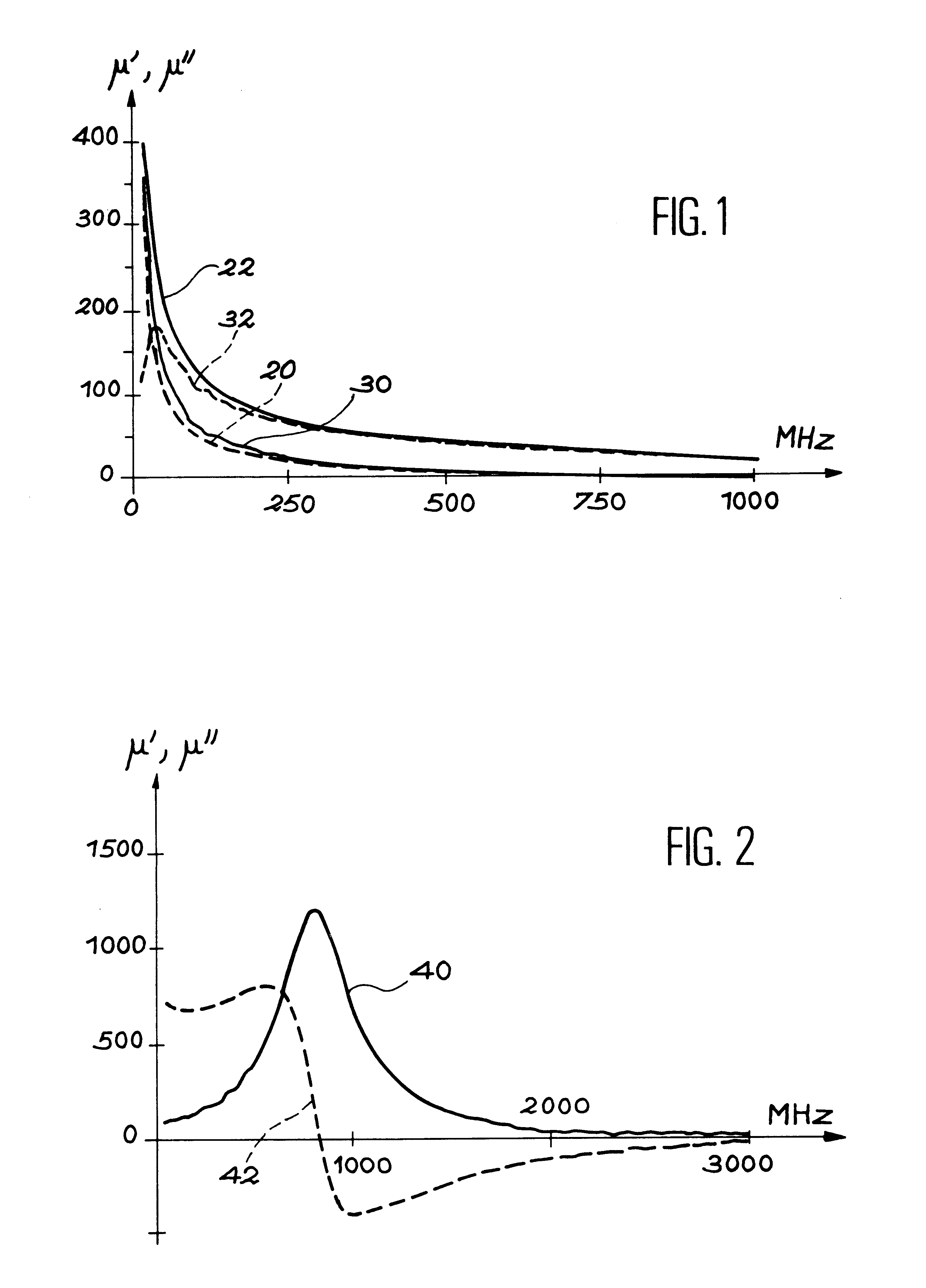Method for determining the permeability of a magnetic material by coaxial line perturbation
a magnetic material and coaxial line technology, applied in the direction of magnetic property measurement, measurement devices, instruments, etc., can solve the problems of complex numeric calculations, inability to directly characterize thin metallic layers and particularly thin ferromagnetic layers using this method, and inability to measure the permeability of thin ferromagnetic layers
- Summary
- Abstract
- Description
- Claims
- Application Information
AI Technical Summary
Problems solved by technology
Method used
Image
Examples
first embodiment
In a first embodiment, the coaxial line used is according to the APC7 standard. The insulating toric support has an inside diameter equal to the inside diameter of the central conductor of the line, which is A=2.94 mm; the outside diameter is 5.94 mm, and is therefore less than the outside diameter of the outside conductor (B=7.1 mm). The height H of the torus is 3 mm. The example magnetic material chosen is a composite glass / ferromagnetic wire (ferromagnetic composition=CoMnSiB) with diameter 2R.sub.wire =150 .mu.m. A length L=5.9 cm of wire is wound around the outside diameter P of the torus, namely 3 turns. The toric support is made of plexiglas. The fractional volume of material is then 0.8%.
The permeability .mu..sub.m of a uniform sample in a line length d is calculated either by a measurement in reflection transmission using Nicholson and Weir equations, or in front of a short circuit. It may be sufficient to measure the reflection of the wave on the sample in front of a short...
second embodiment
In a second embodiment, the coaxial line used is according to the APC7 standard. The inside diameter A of the Plexiglas toric support is the same as the inside diameter of the inner conductor =2.94 mm; the outside diameter 2P is 5.94 mm, and is therefore less than B, the outside conductor diameter (7.1 mm). The height H of the torus is 3 mm. The magnetic material is a thin ferromagnetic layer with composition CoFeMoSiB and thickness e.sub.ferro 0.227 .mu.m on a 12.7 .mu.m thick flexible substrate (kapton). A 3 mm ribbon is measured over 90 mm, namely n.sub.turns =4.75 turns. The fractional volume of the sample is 0.06%.
For thin layers sensitive to magnetostrictive effects, the direction of the winding on the ferromagnetic face on the inside or the outside creates opposite stresses that will vary the resonant frequency of the sample symmetrically about its value at the mechanical equilibrium of the film.
To compare the measurement methods, a wound torus with a load factor of 13% was b...
PUM
 Login to View More
Login to View More Abstract
Description
Claims
Application Information
 Login to View More
Login to View More - R&D
- Intellectual Property
- Life Sciences
- Materials
- Tech Scout
- Unparalleled Data Quality
- Higher Quality Content
- 60% Fewer Hallucinations
Browse by: Latest US Patents, China's latest patents, Technical Efficacy Thesaurus, Application Domain, Technology Topic, Popular Technical Reports.
© 2025 PatSnap. All rights reserved.Legal|Privacy policy|Modern Slavery Act Transparency Statement|Sitemap|About US| Contact US: help@patsnap.com



